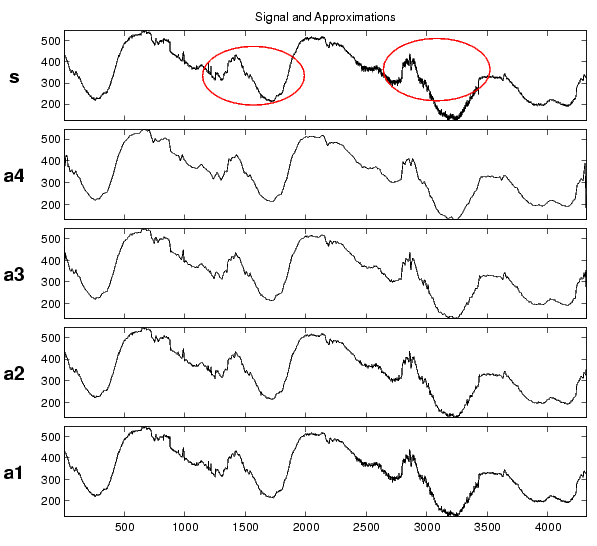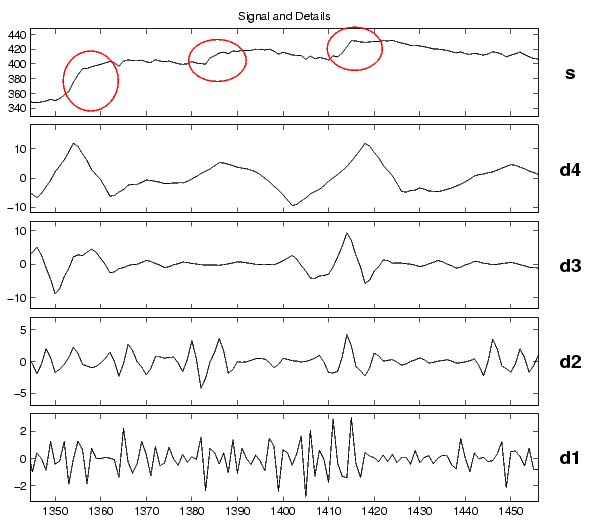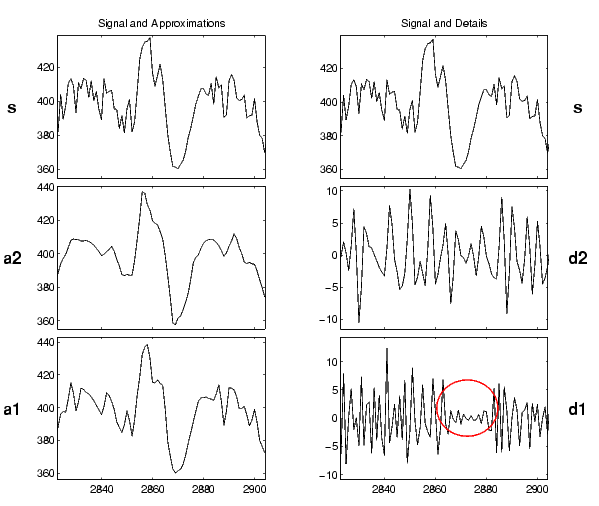

| Wavelet Toolbox |   |
Suggestions for Further Analysis
Let us now make some suggestions for possible further analysis starting from the details of the decomposition at level 5 of 3 days.
Identify the Sensor Failure
Focus on the wavelet decomposition and try to identify the sensor failure directly on the details D1, D2, and D3, and not the other ones. Try to identify the other part of the noise.
Suppress the Noise
Suppress measurement noise. Try by yourself and afterwards use the de-noising tools.
Indication: study the approximations and compare two successive days, the first without sensor failure and the second corrupted by failure (see figure below).

Identify Patterns in the Details
The idea here is to identify a pattern in the details typical of relay-switched water heaters.
Indication: the figure below gives an example of such a period. Focus on details D2, D3, and D4 around abscissa 1350, 1383, and 1415 to detect abrupt changes of the signal induced by automatic switches.

Locate and Suppress Outlying Values
Suppress the outliers by setting the corresponding values of the details to 0.
Indication: The figure below gives two examples of outliers around  and
and  . The effect produced on the details is clear when focusing on the low levels. As far as outliers are concerned, D1 and D2 are synchronized with s, while D3 shows a delayed effect.
. The effect produced on the details is clear when focusing on the low levels. As far as outliers are concerned, D1 and D2 are synchronized with s, while D3 shows a delayed effect.

Study Missing Data
Missing data have been crudely substituted (around observation 2870) by the estimation of 30 minutes of sampled data and spline smoothing for the intermediate time points. You can improve the interpolation by using an approximation and portions of the details taken elsewhere, thus implementing a sort of "graft."
Indication: see the figure below focusing around time 2870, and use the small variations part of D1 to detect the missing data.

 | Analysis of the End of the Night Period | Using Wavelet Packets |  |
© 1994-2005 The MathWorks, Inc.